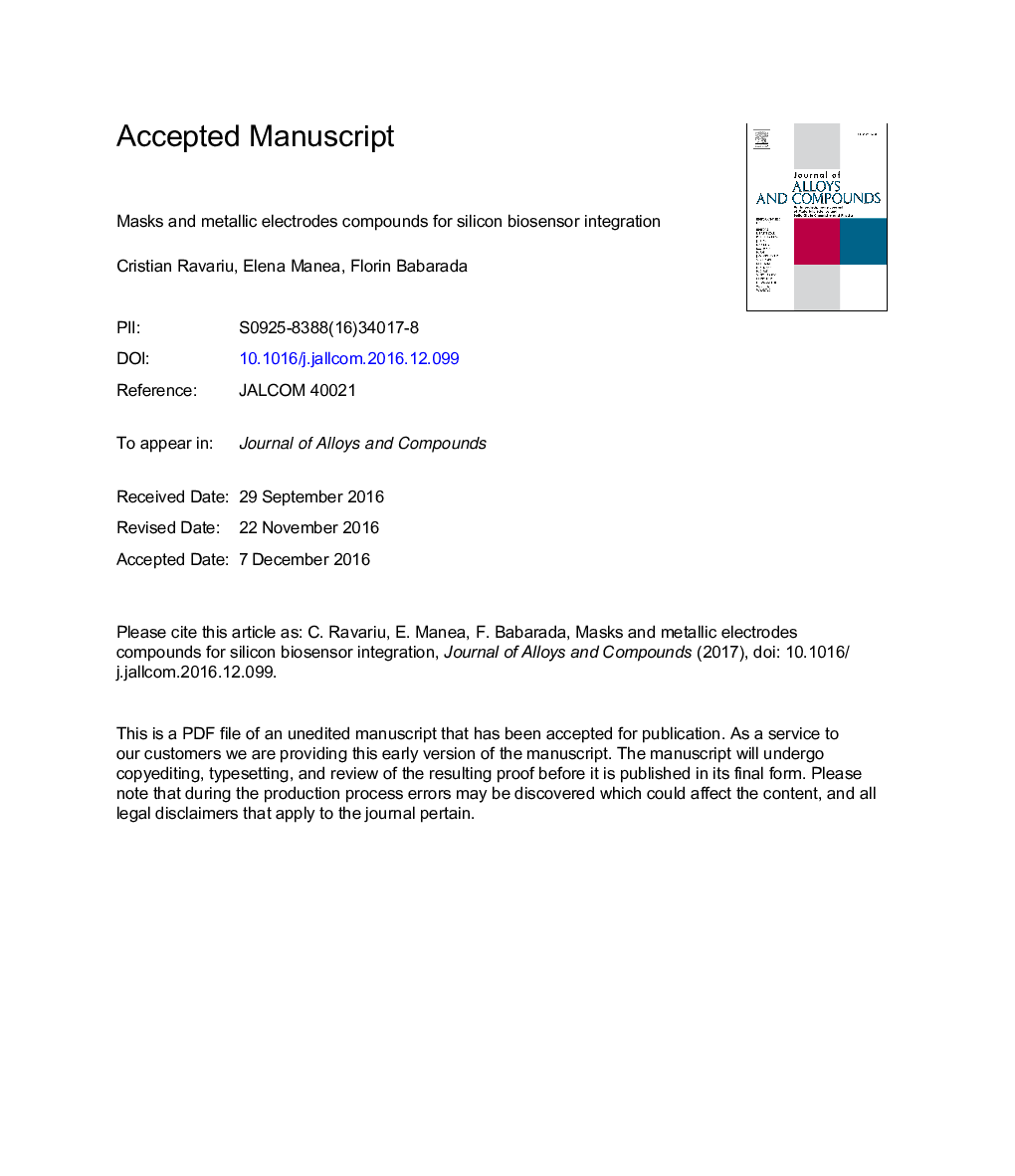| Article ID | Journal | Published Year | Pages | File Type |
|---|---|---|---|---|
| 5460614 | Journal of Alloys and Compounds | 2017 | 13 Pages |
Abstract
The biosensors coupled to Field Effect Transistors, briefly labelled as BioFET, require the co-integration of the bio-receptor elements with the electron device. This demand involves compatibility among the technologies and materials. This paper presents the main fabrication steps of an enzymatic transistor designed to be sensitive to glucose. The main technological flow is based on the classical MOSFETs microelectronic technology in 6 masks, plus a sensitive detection area, configured across the gate space by the 7-th mask, dedicated to bioreceptors. To anchor the enzyme layer onto a Silicon wafer, an intermediary nano-structured TiO2 layer grown by anodization is firstly used. The TiO2 material offers an optimum nano-porosity and biocompatibility with the enzyme. For the glucose-oxidase enzyme immobilization, the nafion and finally the glutaraldehyde agent is used as crosslink polymerization elements. The surface characterization is performed by ATR-FTIR spectroscopy and SEM imaging. Finally, in a discussion section, further details to support the BioFET functionality, are provided.
Keywords
Related Topics
Physical Sciences and Engineering
Materials Science
Metals and Alloys
Authors
Cristian Ravariu, Elena Manea, Florin Babarada,
